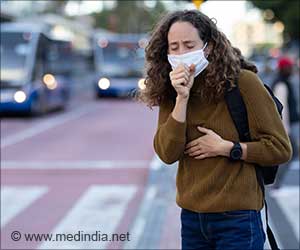
Boise State graduate student Erin Strasser, now with the Rocky Mountain Bird Observatory, and Julie Heath, a professor in the Boise State Department of Biological Sciences and Raptor Research Center, conducted the research.
Strasser and Heath conducted research along one of Idaho's major expressways, Interstate 84, and in suburban and rural areas south of the state's capital city of Boise. Since 1987, researchers from Boise State and the U.S. Geological Survey have monitored a number of nest boxes located along the area's roadways, in people's back yards, and in sagebrush-steppe habitat.
In this study, Strasser and Heath were interested in understanding how human-dominated landscapes affect breeding kestrels, with particular attention paid to the link between disturbance, stress and nest failure.
The two monitored the boxes to determine nest fate, and collected a small blood sample from adult birds. The researchers were looking at corticosterone levels, which indicate stress levels (the equivalent in humans is cortisol). Corticosterone can lead to behavioral and physiological changes that allow individuals to cope with stressful situations, while suppressing other activities such as reproduction.
The data showed that female kestrels nesting in areas with high human activity, such as along noisy roadways, have higher corticosterone levels, but males do not. This could be because females spend more time in the nesting box and thus are exposed more often to stressors such as vehicle noise.
Advertisement
Kestrels nesting in high disturbance areas were almost 10 times more likely to abandon their nest than those in more isolated areas, and this effect lessened the further a nest was from the road.
Advertisement
"To birds, areas with human activity may be perceived as a high-risk environment," the researcher noted.
Given that the vast majority of land in the continental United States is within a mile of a road, wildlife increasingly are exposed to chronic levels of road noise. The resulting increase in stress levels could cause fundamental changes in physiology and behavior across species inhabiting human-dominated environments, which over time could lead to population declines.
The study concludes that until regulations or economic incentives are developed to encourage engineering innovations that result in quieter roads, projects in areas of human activity with favorable habitat should be discouraged to decrease the risk of ecological traps.
In the meantime, Boise State's nesting boxes have been moved from freeway locations to more suitable areas.
A paper describing the finding was published in the British Ecological Society's Journal of Applied Ecology.
Source-ANI









